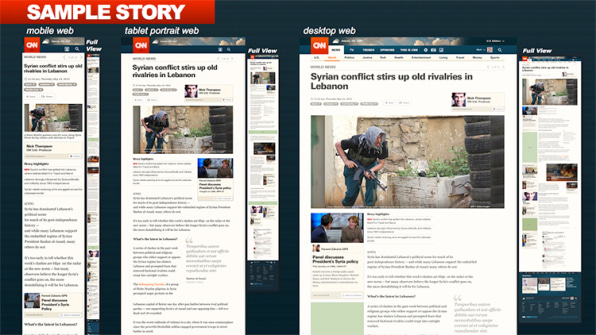What Does the Color Black Mean in a Mood Ring
If you were one of the millions of viewers who helplessly tuned into CNN for "breaking news" during the tragic Boston Marathon bombings, you likely learned that "breaking news" was rarely just that. In fact, the eye-catching headline rarely left the screen, as if the on-air and website graphics were stuck with the "BREAKING NEWS" banner on loop. "It [felt] like a machine that spit out breaking news," acknowledges CNN.com Senior Vice President KC Estenson. "People are often overwhelmed by our site."
On Wednesday, however, Estenson and CNN president Jeff Zucker unveiled a redesigned version of CNN.com that aims to alleviate such headaches on the website, which sees 1.6 billion average monthly page views. Zucker and his team say the overhaul cost $15 million on the backend; it features a cleaner look that highlights a smaller set of stories with splashier, high-res imagery, in a way that's consistent across mobile devices. But perhaps it's most compelling design feature is CNN's new chameleon-esque color-coding system, which is designed to change to reflect its content.

Rather than have a consistent color scheme, CNN.com will soon evolve along with the day's stories. "Think of it almost like a mood ring," Estenson says. "The site itself will morph based on the news of the day." That means when it comes to standard news, he explains, the site is likely to use a "more mellow tone of colors: grays, blues, blacks." But when "the news starts to become more serious and escalate, the colors will start to change." For example, during the Boston Marathon, as the digital team showed on Wednesday, the background of CNN.com would immediately become caked in bright red.
It's a novel idea. In the age of 24/7, on-demand digital content, when most of us are desensitized to violence, let alone "breaking news" headlines, media outlets have struggled to come up with cleverer ways to grab our attention. Introducing subtle visual cues like this color coding system is one tool to help the website stand out. As Estenson says, "The design system will subconsciously speak to you…[when] we're in full-breaking news [mode]."

The question now is how often CNN can take advantage of this color system–before we become desensitized by it, too–and for what purposes. If the screen becomes splashed in red at every hint of breaking news, the system is likely to become less effective. What's more, the color coding, which the team says is automated with editorial input, could become synonymous with emotion. In other words, rather than the color red being equated with "urgent," it might become on par with "scary," the news color equivalent of the infamous Drudge Report siren–not the best strategy for an industry known for using fear as a strategy to attract readers and viewers.
Marisa Gallagher, executive creative director of CNN Digital, says the red color is "supposed to be [synonymous] with urgency." And she stresses that the company doesn't plan to overuse it.

"Red is such an important brand color, [but] we're over-saturating people with it today," she says. "What we want now is more of a calming influence most of the day, so when there is a breaking news event, you really feel it."
CNN is still testing its homepage redesign, and plans to introduce it to the public in the months ahead.
What Does the Color Black Mean in a Mood Ring
Source: https://www.fastcompany.com/1673282/cnns-redesign-will-color-code-news-like-a-mood-ring